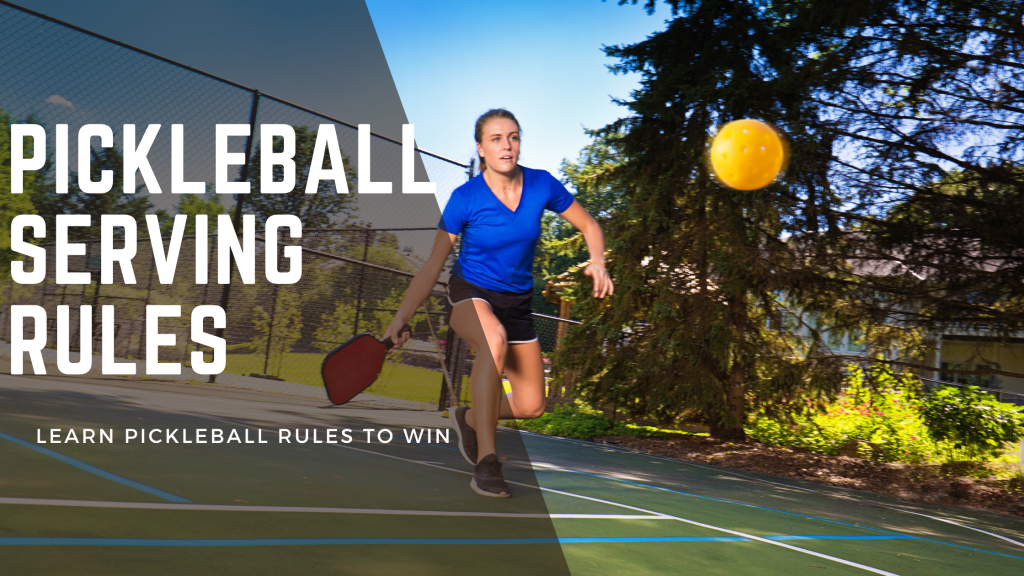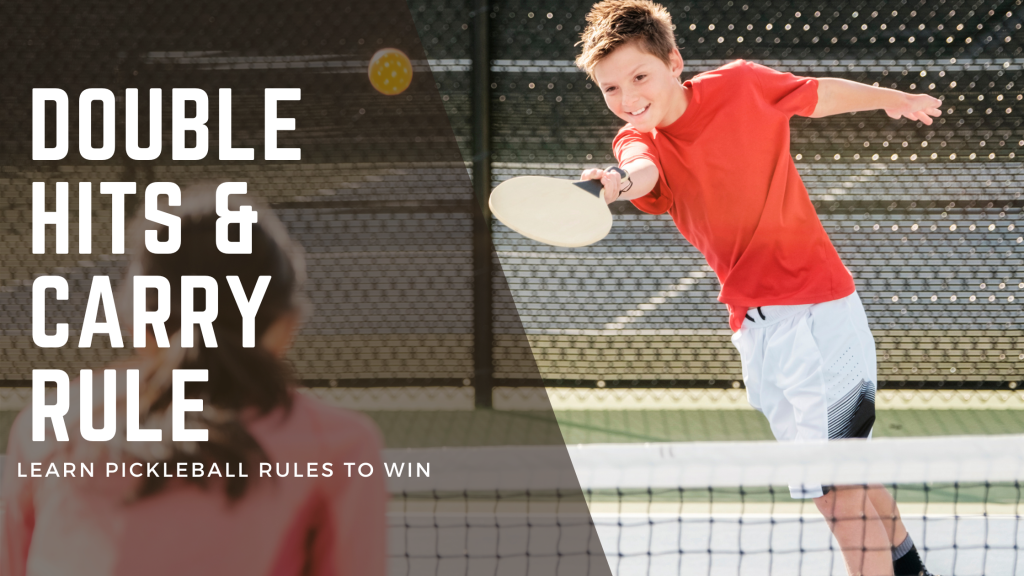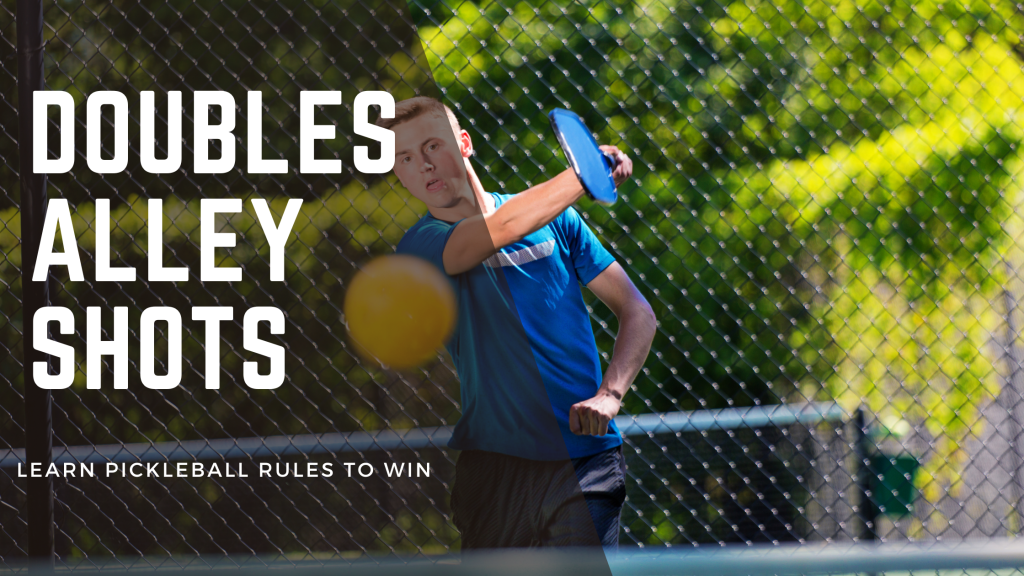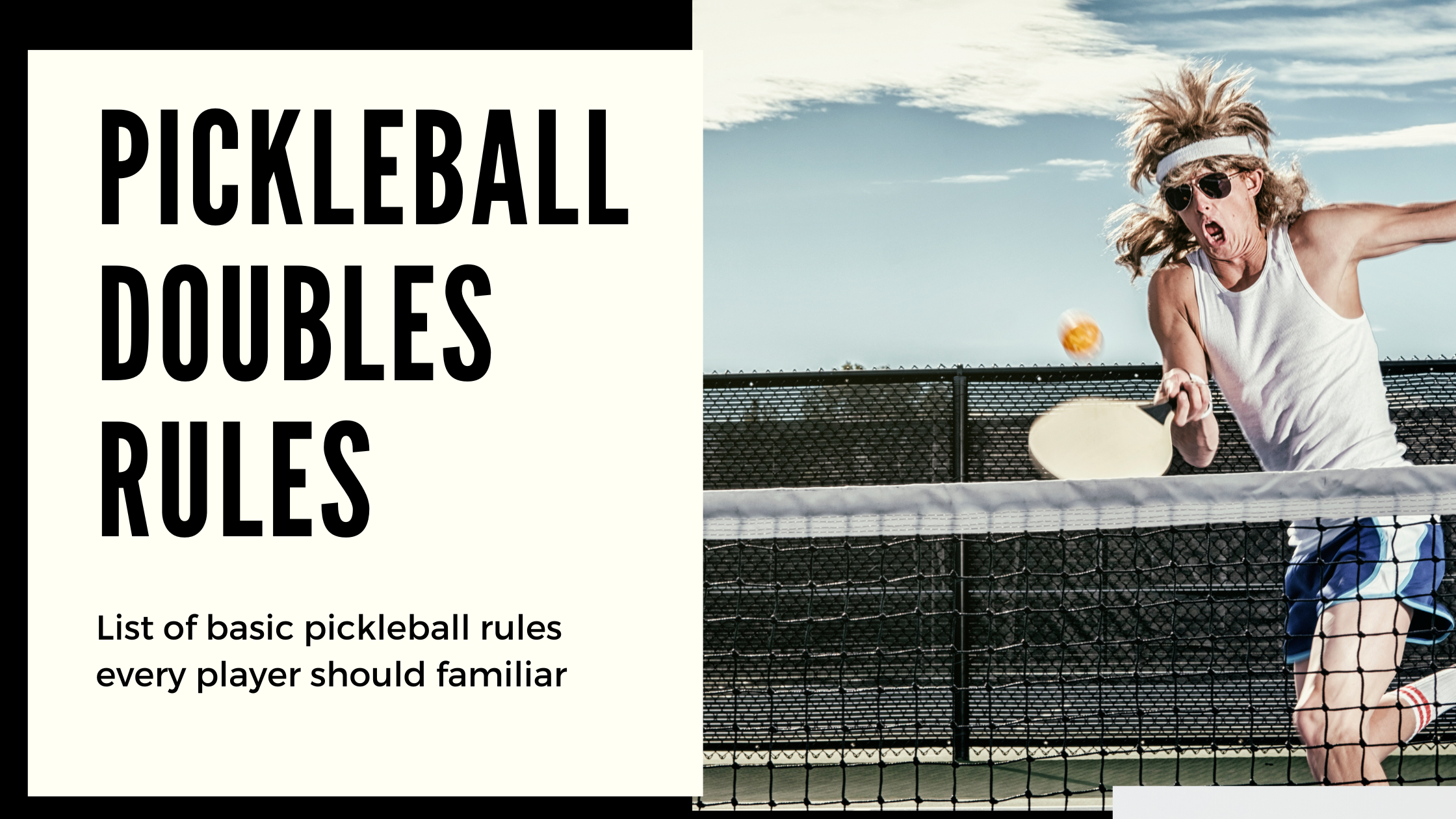Pickleball is an exciting, fast-paced sport played both as singles and doubles. The rules for pickleball doubles are slightly different than those of singles, and understanding them is essential to get the most out of your game.
This article will cover the top twenty pickleball rules doubles so you can take your game to the next level. We’ll also provide tips on applying these rules effectively during a match. By understanding and adequately utilizing these rules, you’ll be able to maximize your performance and have a more enjoyable experience playing pickleball with friends or family. Let’s get started!
Pickleball Serving Rule Doubles
Pickleball Serving Rule Doubles help players to get more points during the game. It will help you to learn to play pickleball quickly and effectively. These doubles serve the purpose of ensuring that everyone has a fair chance to play. Let’s have a look at it.

Serve Order
In doubles play, the serving order should alternate between teammates each time a point is scored. This means that if one player serves first, their partner must serve second; if the partner serves first, their teammate must serve second. This rule ensures fairness and keeps the game moving along quickly without confusion about who should be served and when.
Also Read: Who serves first in pickleball
Serving Area
Both players on a team should stand within the designated serving area when they serve. This area is typically marked off by two lines parallel to the net that extend back from either side of it into the court (these lines are called “service boxes”). If either player steps outside of this area while serving, they will lose their serve immediately, and their opponent will score a point automatically.
Service Motion
All players must use an underhand motion when they serve in pickleball doubles. Overhand serves are not allowed because they can be too powerful and make it difficult for opponents to return them properly. Additionally, all players must keep their feet planted on the ground until after they have made contact with the ball during their service motion; jumping or hopping before making contact is prohibited as well since it gives an unfair advantage to one team over another due to the increased power behind the shot.
Receive Order
When receiving a serve in pickleball doubles play, only one member of each team may hit it back across the net; this player is known as the “receiver” while their teammate stands at least five feet away from them (this distance is measured from where each player stands at rest). The receiver has two choices when receiving a serve: they can either hit it back directly across to their opponent or let it bounce once before hitting it back across (the latter option being known as “volleying”).

Rotation System
During pickleball doubles play, teams rotate positions after every point scored; this rotation system helps keep things organized so that everyone knows where they should be at all times during a match (it also helps prevent fatigue since players don’t stay in one spot for too long). Typically, teams will rotate clockwise around the court after each point so that no one gets stuck playing defense against their opponents for too long periods without getting any chances to attack (this rotation system also applies when switching sides between games).
Change Sides
Between Games: After every odd-numbered game (i.e., 1st game = 3rd game = 5th game, etc.), teams must switch sides before beginning play again; this ensures fairness since both teams will have equal opportunities to benefit from any wind or sun conditions present on the court during playtime (it also prevents fatigue since players don’t stay stuck on one side for too long periods).
Court Positioning
During pickleball doubles play, both team members should remain within specific areas of the court at all times; usually, these areas are marked off by lines parallel to either side of net extending outwards into the court (these lines are called “court boundaries”). Generally speaking, teammates should remain within opposite halves of court whenever possible so as not to impede upon each other’s movements or shots; however, if needed, one player may cross over into their partner’s half briefly to assist them with certain shots/strategies, etc., but must move back into own half immediately afterward unless otherwise agreed upon by both partners beforehand (e..g., setting up “doubles alley” etc.).
Volley Zone Restrictions
When volleys occur during pickleball doubles play, neither member of the opposing team may enter what’s commonly referred to as “volley zone” doing so would give them an unfair advantage over another team due to increased proximity, which would allow them greater control over shots/volleys, etc. If either player enters the volley zone while volleys occur, then opposing team is awarded an automatic point regardless of whether a ball was returned successfully.
Non-Volley Zone Restrictions
On the other hand, another restriction applies when non-volleys occur; neither member opposing team may enter what’s commonly referred to as a “non-volley zone,” which is usually marked off by two lines extending outwards from the centerline towards sidelines. Again, entering a non-volley zone gives an unfair advantage due to increased proximity, allowing greater control over shots/non-volleys, etc.
Double Hits & Carry Rule
In general terms of pickleball rules doubles, double hits & carry rule states that no more than two consecutive hits are allowed per side; thus, if a ball bounces twice consecutively before being returned by the same person/team, then opposing team is automatically awarded a point regardless of whether a ball was returned successfully or not. Additionally, carry rule prohibits carrying/palming ball with hands; thus, if such action occurs, then again opposing team is automatically awarded a point regardless of whether ball was returned successfully or not ..

No Hitting Opponents
Obviously enough , players cannot hit opponents nor intentionally direct balls toward them; doing so results in immediate loss of points & possibly further disciplinary action depending on the severity.
Net Play
During pickleball doubles matches, all shots struck above net height are considered legal, provided no interference occurs with opposition; however, any shots struck below net height are deemed illegal & result in a loss point for an offending party ..
Foot Faults
Players cannot step onto boundary line surrounding court nor touch/cross line with foot while striking ball.
Ball Out Of Bounds
Any balls struck outside boundaries surrounding court are considered bounds & result in a loss of points for an opposition party.
Open Court Shots
In pickleball rules doubles, open Court Shots refer to those directed towards open spaces rather than directly towards opponents; such shots require greater accuracy & finesse skill level order to be successful.
Doubles Alley Shots
Doubles Alley Shots refer to those directed down middle portion court between opponents rather than directly toward either side opponent’s body; such shots require great precision and skill level to be successful.

Cross Court Shots
Cross Court Shots refer to those directed diagonally across the entire width court rather than straight ahead of direction opponent’s body; such shots require great speed & agility skill level to be successful.
Also Read: Pickleball Illegal Serves
Lob Shots
Lob Shots refer to those directed high up air rather than straight ahead of the opponent’s body; such shots require great timing and skill level to succeed.
Drop Shots
Drop Shots refer to those directed low ground rather than straight ahead of the opponent’s body; such shots require great patience and skill to succeed.
Frequently Asked Questions (Pickleball Rules Doubles)
Final Verdict
Pickleball rules doubles provide a framework structure upon which thrilling competitive matches are based – critical understanding concepts discussed here helps ensure a fair, enjoyable experience for everyone involved! With proper knowledge and application of these rules, anyone capable of maximizing potential performance while having a fun process – good luck!
